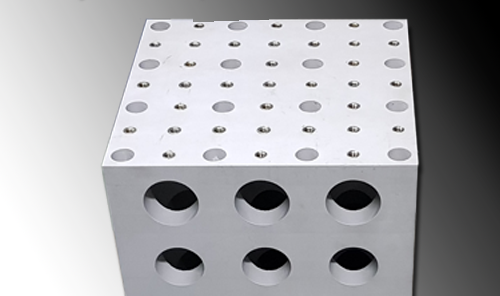 NeoCast - Light Metal Technologies is a magnesium foundry producing slip tables and head expanders also castings for vibration devices. We have 12 years of experience in the foundry business and our casting quality satisfies the most demanding automotive industry requirements. We are here to help you with any magnesium gravity casting needs. Vibration testing of components is a critical aspect of design validation in modern engineering. This type of testing ensures that components do not fail due to fatigue or fasteners do not shake loose in service.
NeoCast - Light Metal Technologies is a magnesium foundry producing slip tables and head expanders also castings for vibration devices. We have 12 years of experience in the foundry business and our casting quality satisfies the most demanding automotive industry requirements. We are here to help you with any magnesium gravity casting needs. Vibration testing of components is a critical aspect of design validation in modern engineering. This type of testing ensures that components do not fail due to fatigue or fasteners do not shake loose in service.
Aside from the shaker, key aspects of a vibration testing system is the support tooling, i.e. Head Expander, Slip plate, and the fixture that supports the component. These items need to be stiff, strong, light weight and have good damping characteristics to reduce resonance amplification levels for improved controllability. Magnesium AZ31B-Tool Plate (TP) is an ideal material for these due to its combined physical and mechanical properties. AZ91 and RZ5 are an ideal material for other elements like slip table and head expanders.
We produce casting using following magnesium alloys:
AZ91D: Most commonly used alloy for high pressure die casting. Offers good strength to weight ratio, very good corrosion resistance and excellent castability. This alloy is typically used for power-train and mechanical components where toughness is more important than deformation capability.
AM60B: Commonly used for automotive die castings for safety components such as instrument panel structures and seat frames. This alloy offers excellent ductility, energy absorbing properties, strength and castability.
AM50: With a lower aluminum content than AM60 this alloy offers a further increase in ductility but at a slightly reduced strength and a slight reduction in castability. It is typically used where the performance requirements demand elongation properties beyond that of AM60.
ELEKTRON® RZ5 / ZE41: is a well proven magnesium casting alloy containing zinc, rare earths and zirconium. Used in the T5 condition, this high strength magnesium alloy is ideal for high integrity castings operating at ambient temperatures or up to 150°C. In addition to displaying excellent casting characteristics, the alloy is both pressure tight and weldable. The versatility of this alloy makes it of interest to a wide range of designers dealing with aerospace, automotive, military and electronic applications.
ZRE1: is a magnesium based alloy containing zinc, rare earths and zirconium. The alloy exhibits excellent casting characteristics with components being both pressure tight and weldable. Castings are free from microporosity and the tendency to hot cracking in difficult castings is low. It is creep resistant to 250°C. Applications: The alloy is suitable for components operating at temperatures where creep resistance is required for low stressed complicated castings.
ELEKTRON® WE54: is a high strength fully heat treatable magnesium based casting alloy for use at temperatures up to 300°C. The alloy develops high strength properties at elevated temperatures, without containing either silver or thorium. The excellent retention of properties at elevated temperatures and improved corrosion resistance will be of interest to designers of power systems, transmissions, missiles, high performance cars and other high technology applications. Prolonged use of this alloy (ie in excess of 1000 hours) at temperatures in the range 100°C–250°C may result in the loss of ductility. An alternative alloy is ELEKTRON WE43.
ELEKTRON 21: is a new high strength fully heat treatable magnesium based casting alloy for use at temperatures up to 200°C. This alloy has excellent corrosion resistance characteristics and castability.
Additional capabilities:
- Heat treatment in-house T4, T6 and other
- Die making capability
- Magmasoft simulation for aluminium and magnesium alloys
- X-Ray inspection, computed tomography (C) and FPI
- Mechanical properties and metallographic tests
- Machining CNC
- Welding by TIG method
- Ceramic layers applied by plasma oxidation






